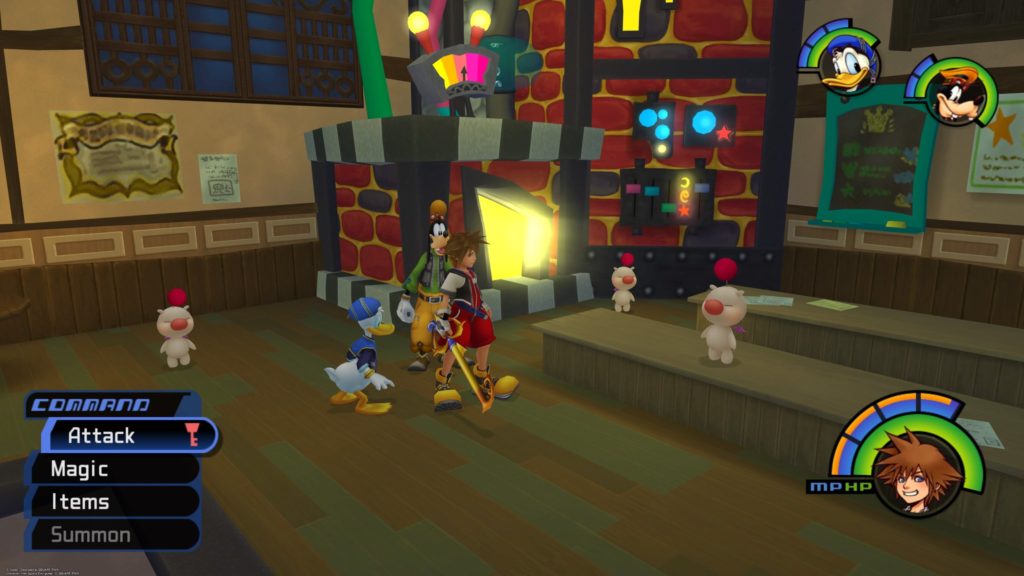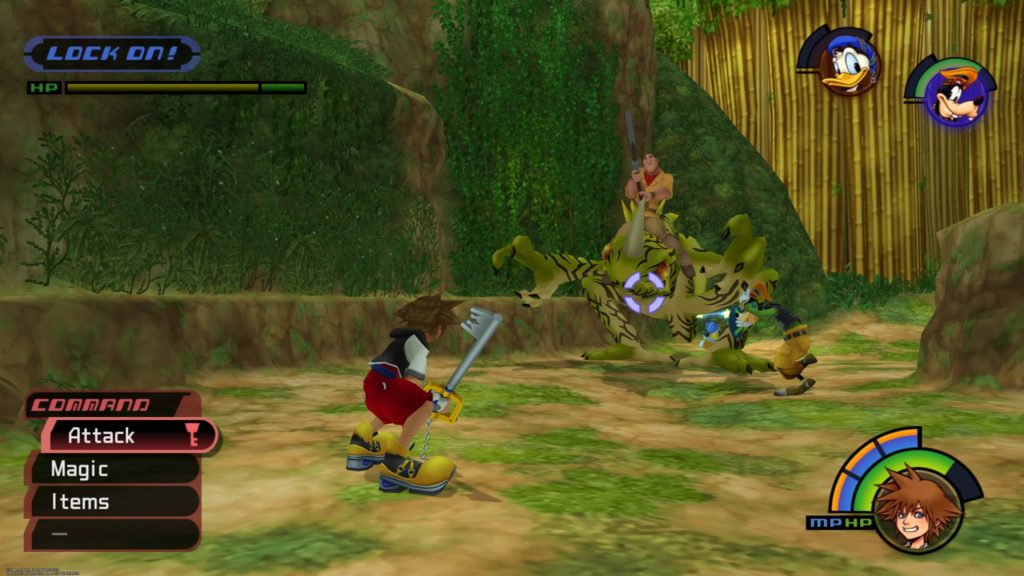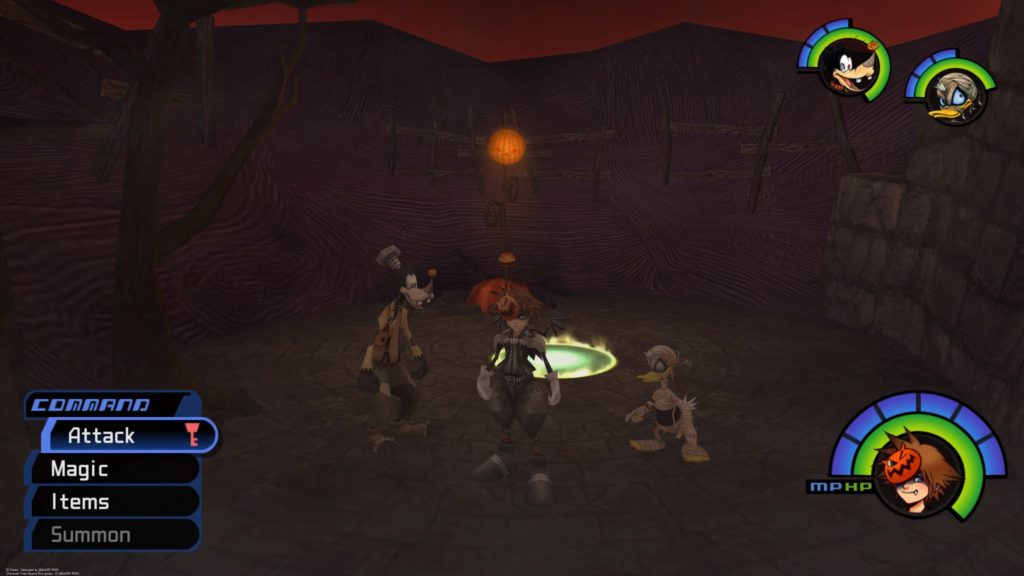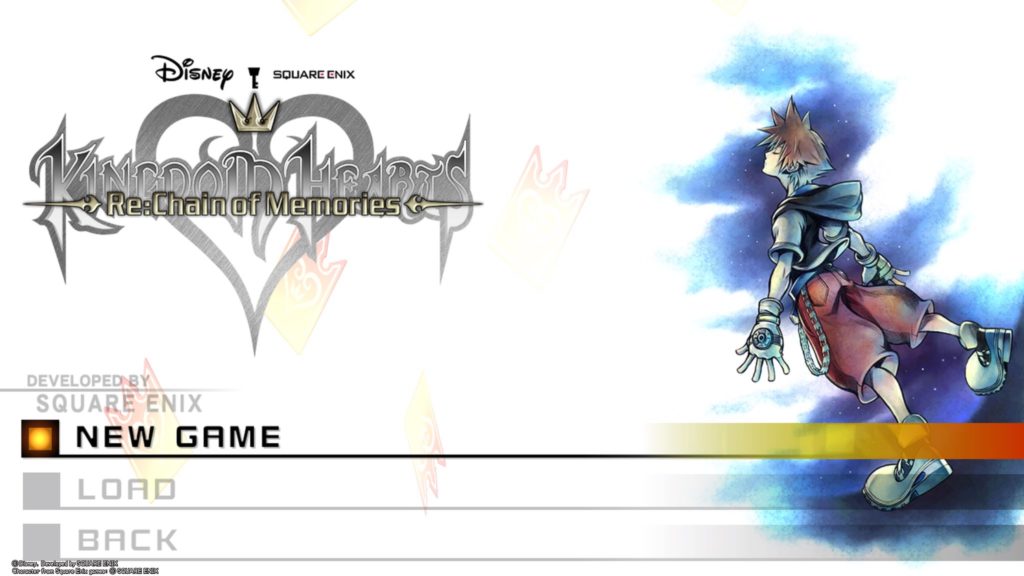- Genre: Action RPG
- Platform: PS4
- Also Available On: PS2, PS3
This is admittedly the first time I’d played Kingdom Hearts II. I’d played most of the spinoff games in the past, but given how little I kind of enjoyed playing through Kingdom Hearts in its original form, it didn’t make a whole lot of sense to me to pay for KH2 at its release when I should really have been focused on paying for college. Since then going back to play it just never really happened. In continuing my path to eventually get to KH3, this was then the one real big game I had to get to, and it’s surprising in ways I wasn’t expecting.
The first surprise is in the drastic difficulty change between releases. Where the original Kingdom Hearts was artifically difficult because of bad mechanics, the second game is artificially easy because of good mechanics used too much. There were definitely a couple of times where I died to the usual KH blind damage nuke, but by and large I was able to brute force my way around those points once I knew what to look out for. However, this all came down to the fact that combat was significantly better than the first game in a couple crucial ways.
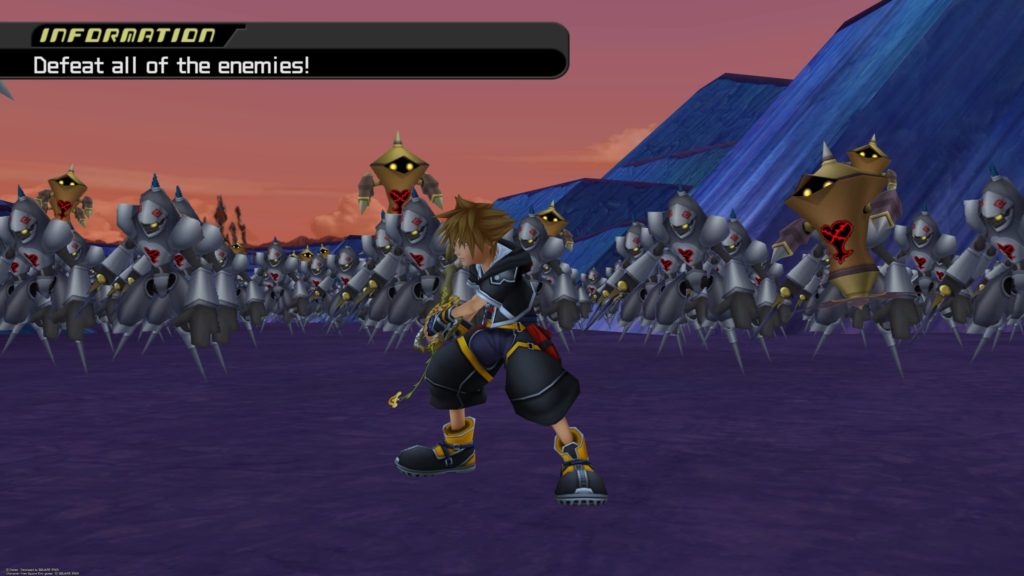
The first big change to combat is the complete rewrite of how mana works in the game. The original game recharged mana per-attack completed. While this works alright in games like Tales of where there’s a bunch of safety space in absorbing damage, for KH getting up close had to be fairly specifically timed and often resulted in death by accidents. The entire process of using mana in that combat system just ended up feeling like a slow process, so I really leaned into items for healing and straight attack brute force. It’s a style that I enjoy anyway in a typical action RPG, so poor combat mechanics aside it worked out fairly well for me.
For KH2, mana is a fixed bar resource, magic attacks have a fixed cost, and once a mana bar is depleted it is set into a timer-based automatic recharge. This vastly improved the utility of magic as a whole. I knew that I could fairly reliably have a Cure spell if needed. If I was in a section where the enemy was stunned, I could unload a bunch of magic spells and know that I wouldn’t then have to play it safe while waiting for attacks to refill my mana. As a result, my entire combat tendencies went into a much more aggressive offense-first setup which ended up greatly benefiting the overall flow of the game throughout.
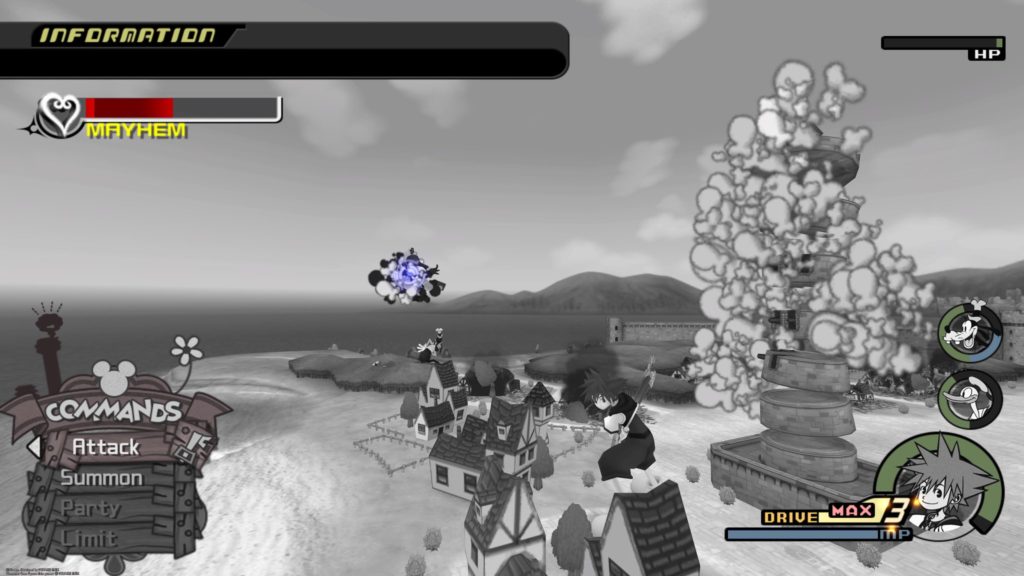
The combat flow was also helped by the second biggest surprise for me – just how many damn attacks they let you build into your combo by the end of the game. Additional combo skills were unlocked periodically, usually focused on some specific type of combat (on the ground, in the air, etc). Turning on these skills basically meant that your combo chain would get one longer and let you lean into heavy damage that much longer. By the end of the game I probably had about a 10 combo chain in the air, and at least 6 or 7 on the ground. The end result of this is that I could pretty typically go into a boss and do at least half a bar of damage per-combo, if not more. In any stun situation, I was easily doing 2 full bars of damage against a boss. This solved a lot of the problem of the first game’s bosses, where they mechanically sucked AND took forever, by simply having them die quicker whether or not their mechanics were really that good.
Besides all that, the overall game was definitely a cleaner experience. Boss arenas tended to be pretty simple box or circle affairs, which got rid of the collision problems of the first game. Your sidekick characters tended to be more on the ball with support healing, giving you more opportunity to be in the fight. The general balance curve was a lot less prone to difficulty spikes and flatline segments, giving a much more balanced progression path. Even the worlds themselves were setup in a way that more paths opened up on second or third playthroughs of a world, so going back never felt like it was done as a need to grind or search, but instead to learn more about what was going on. Attacking vaguely in midair did a much better job of homing in on targets around you, so there was a lot less waste in simply trying to get AT something.
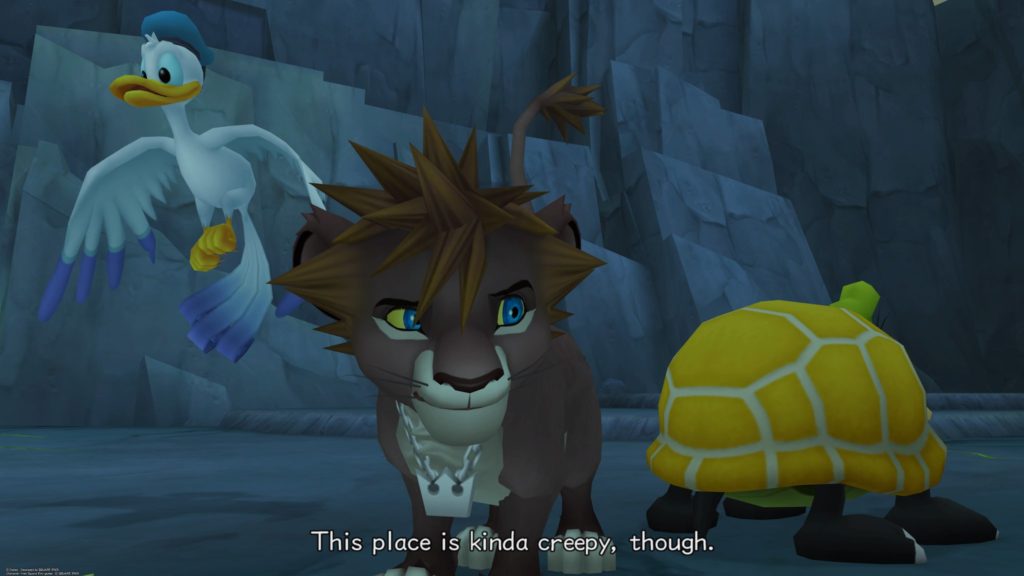
It’s also worth noting that the Lion King costumes are the best costumes the series has had to this point.
Is this game without problems? Hardly. The things above all lead up to an experience that is simply way too easy overall, but it ends up being easy in a way that doesn’t detract from the experience. It’s also got some systems like the form-shifting Drive system that I quite frankly didn’t find at all useful beyond gaining some traversal passives. Summons were also technically still there, but again I didn’t end up finding much practical use for them. The story is also completely bonkers, and when combined with the KH 1.5 disc’s lore makes absolutely no sense. However, this game is a much cleaned up experience compared to the first title, and in doing so it goes from something that I play because Disney + Final Fantasy is an interesting quirky idea to something that I play because it’s actually a lot of fun.
Next in line for the KH replay cycle is going to be Dream Drop Distance HD, which actually is one of the games I’ve played through before.


